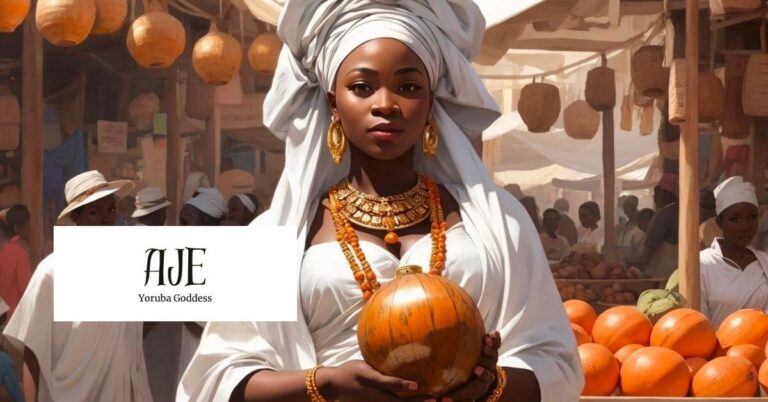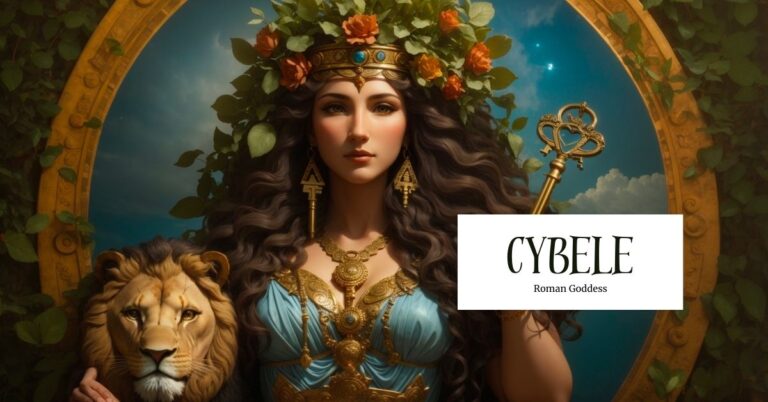Luna: Goddess of the Moon
Amidst the intricacies of Roman mythology, the goddess Luna emerges as a radiant and enchanting figure, drawing admiration for her ethereal connection to the moon. As the Goddess of the Moon, she embodies the enigmatic qualities of the night sky, inspiring humanity with the enchanting glow that has stirred wonder for generations. By delving into her multifaceted persona, we can better understand her significance as the deity who governs the moon’s luminous phases, guiding sailors and illuminating the path for those lost in the dark expanses of night. In so doing, we reveal a deity whose celestial influence extends far beyond the heavens, intertwining her presence with the fabric of human fascination and reverence.
Overview of Luna
Luna commands authority over the vast celestial expanse and embodies the resplendent allure of moonlit nights. Her name is steeped in the rich etymology of Latin, deriving from the word “lūna,” which signifies the moon and establishes a direct correlation between her being and the celestial body she represents (“Luna (Goddess)”). The goddess is widely recognized as one of the foremost deities associated with the moon, alongside her Greek counterpart Selene, who is the moon personified. Luna’s connection to similar moon deities in cultures worldwide underscores her integral role in the celestial realm. As the ruler of the night sky, she inspires a sense of wonder that is closely aligned with the tranquil luminosity of the moon, making her a powerful embodiment of the mysterious and captivating enigmas of the cosmos (“Luna, Moon Goddess”).
Source: Alice “Alicja” Jones
Titles
Abilities
As the moon goddess, Luna wields her celestial authority to command the moon’s phases, speckling stardust upon the night sky (“Luna (Goddess)”). This skillful manipulation of lunar cycles highlights her crucial role in shaping the aesthetic and spiritual essence of the night sky. Luna’s influence extends to the earthly tides attributed to her celestial dominion (“Luna, Roman Goddess of the Moon: History & Mythology | Who Was Luna?”). The moon’s gravitational pull profoundly impacts ocean tides, and Luna’s association with this phenomenon signifies her expansive sway over natural forces. The goddess’s mystique transcends the realm of celestial bodies, as she is believed to possess the power to bestow dreams upon mortals (“Goddess Luna”). This ethereal ability aligns with her connection to the night and the enigmatic realm of the subconscious mind. Through her touch, Luna creates dreams, blurring the boundaries between the mortal and the divine (“Luna, Moon Goddess”).
Characteristics
Luna is often portrayed in flowing garments reflecting the gentle luminosity of moonlight (“Goddess Luna”). Her tranquil grace resonates with the calm and enchanting atmosphere of moonlit nights as if she is a living embodiment of the celestial radiance she oversees. Her enigmatic aura befits her cosmic origin, encapsulating mystery and allure that invite contemplation (“Luna, Moon Goddess”). Artists and poets are drawn to capture this dual nature through brushstrokes and verses, echoing the irresistible charm that the moon’s enigmatic glow has held for humanity through the ages (Milojkovic).
Source: Fine Art America
Traits
With an air of composure and tranquility, Luna embodies the serene properties intrinsic to moonlight (“Luna (Goddess)”). Her compassionate nature often intertwines with her role as a guide for those who are lost in the obscurity of the night, providing a comforting presence and solace during times of darkness (Milojkovic). Luna’s watchful and nurturing disposition positions her as a guardian of the celestial expanse and a benevolent force that oversees the tranquil night skies. This aspect of her persona underscores her timeless association with care and guidance, invoking a sense of security akin to the moon’s gentle illumination amid the vastness that is the night sky (“Goddess Luna”). As a nurturing presence, Luna’s influence extends beyond the physical realm, embodying the notion of solace and protection in the realm of the divine, a manifestation of the moon’s guiding light in both the physical and spiritual realms.
Symbols
Luna is associated with a myriad of symbols that encapsulate her profound influence over the luminous phases of the moon and the mystic realm of the night. Among these symbols, the crescent moon is a quintessential emblem representing Luna’s profound association with the ever-changing phases of the moon (“Goddess Luna”). Additionally, Luna’s symbolism includes owls and horses as her emblematic companions, with the owl resonating with Luna’s ethereal qualities (“Luna, Moon Goddess”) and the horse symbolizing her celestial dominion (“Luna, Roman Goddess of the Moon: History & Mythology | Who Was Luna?”). Together, these symbols create a rich tapestry of Luna’s character, encapsulating the wisdom inherent in the night and the ethereal beauty that captivates both mortal and divine observers.
Source: Fine Art America
Festivals and Rituals
Luna is honored through festivals and rituals that pay homage to her esteemed role in the night sky. One such occasion is the “Lunalia” festival, a joyous event characterized by feasting and revelry commemorating Luna’s influence on the earth (Milojkovic). During this festive gathering, communities would gather to admire the moon’s ethereal beauty and offer prayers of protection during their journeys under her watchful gaze (“Goddess Luna”).
A significant aspect of Luna’s veneration involves rituals of illumination, which symbolize her radiant persona. Candles and torches are employed in these rituals to honor Luna’s celestial dominion and to amplify her mystical presence within the human realm (“Luna, Moon Goddess”).
Source: https://valhalla-world.com/
Legends associated with Luna
The goddess of the moon exudes a radiance that serves as a celestial beacon, drawing the hearts and imaginations of countless individuals towards her ethereal connection to the moon. A thorough exploration of her origin, legends, influences, and even her modern appearances reveals the enchanting essence of this divine entity in great detail. From the earliest recorded myths Luna has held a prominent place in people’s imaginations worldwide, inspiring awe, reverence, and wonder in all who encounter her celestial presence.
Origin story
The varied narratives surrounding Luna’s origin story present an array of interpretations, each contributing to her profound significance within the Roman mythos. A fair few claim that Luna is the offspring of the celestial Titans Hyperion and Theia, making her a sibling to Phoebus, God of the Sun, and Aurora, Goddess of Dawn (“Luna (Goddess)”). While others claim her to be the progeny of Jupiter and Latona, connecting her to both the mighty Titans and the supreme deity of the pantheon (Milojkovic).
Such diversity underscores her role as a bridge between celestial realms, embodying the ethereal qualities of the moon while linking her to both ancient and supreme forces in the Roman pantheon.
Source: Art Uk
The Eternal Slumber of Endymion
The captivating legend of Luna’s interaction with the mortal realm has etched a romantic narrative into Roman mythology. According to this tale, Luna’s resplendent allure captivated the heart of the mortal shepherd Endymion. Touched by his unwavering devotion, Luna implored Jupiter to bestow upon Endymion the gift of eternal youth to ensure his beauty would endure throughout time (“Goddess Luna”).
In a bittersweet exchange, this eternal youth came at the price of perpetual slumber. Endymion, the recipient of this divine favor, would remain forever in a state of dreams, entranced in the subconscious realm and forever accompanied by Luna’s luminous presence (“Luna (Goddess)”). This passionate encounter between the goddess of the moon and Endymion is rooted in both the Bibliothek and the ancient texts of Pausanias. However, the cause for Endymion’s perpetual sleep in these texts is often subjective (Milojkovic). Intertwining love, sacrifice, and themes of compassion, this legend highlights Luna’s role as a goddess who bridges the gap between the divine and the mortal through acts of selflessness and everlasting connection.
Source: Artprinta
The Goddess Luna and the Temple Built in Her Honor
The tale of Luna’s veneration at the Temple of Luna in ancient Rome is a legend that has endured through the ages. According to lore, the sixth king of Rome, Servius Tullius, constructed this hallowed temple to pay tribute to Luna’s profound influence over the moon’s cyclical phases (“Luna, Moon Goddess”). Luna’s guiding force in the nocturnal expanse was embodied within the temple, fortifying her importance in the lives of the Romans.
The Temple of Luna was adorned with depictions of Luna’s celestial chariot, elegantly drawn by two horses and an ox, symbolizing her radiant dominion over the moonlit night (“Luna (Goddess)”). The Roman populace paid homage to Luna within its sacred walls, reinforcing her protective and nurturing role and offering solace to those who sought refuge under her gentle glow (“Goddess Luna”). This legend speaks to Luna’s celestial might and her cherished place in the hearts of the Romans, guiding and shielding them through the intricate dance of the night sky.
Source: agefotostock
Influences of other religions/cultures on Luna
The intricate complexity of Luna’s character is accentuated by her profound connections to diverse cultures and deities. The Roman goddess Luna shares remarkable similarities with her Greek counterpart Selene and the Etruscan goddess Thesan, who are closely associated with the moon (“Luna (Goddess)”). While Luna governs the moon’s luminous phases, Selene mirrors this role in Greek mythology, embodying the same celestial charm (“Luna, Roman Goddess of the Moon: History & Mythology | Who Was Luna?”). Similarly, the Etruscan Thesan shares deep ties to the moon, highlighting its influence across different cultures (Milojkovic).
These interconnected deities seamlessly traverse cultural boundaries, symbolizing the shared wonderment and awe that the moon’s radiance has instilled in humanity for countless ages (“Goddess Luna”). Through Luna’s kinship with Selene and Thesan, the transcendence of the moon’s mystique becomes unequivocally evident—spanning the vast tapestries of Roman, Greek, and Etruscan civilizations (“Luna, Moon Goddess”).
Modern appearances
Luna’s enduring impact resonates across various creative avenues in the contemporary era. The realms of art, literature, and popular culture provide ample platforms through which Luna’s ethereal essence and enchanting presence persist seamlessly (“Luna (Goddess)”). Her representation in novels, films, and visual arts showcases her timeless appeal, ensuring her place in the collective imagination remains steadfast and enduring.
In literature, modern authors are interested in Luna’s mystique. Within contemporary literature, Luna’s celestial attributes effortlessly blend with themes of magic, the enigmatic, and the unexplored. For instance, J.K. Rowling’s “Harry Potter” series seamlessly weaves Luna Lovegood, a character whose name evokes the goddess, into a narrative that celebrates unconventional wisdom and otherworldly perspectives with eloquence and grace (“Luna, Moon Goddess”).
Regarding art, Luna’s serene and luminous aura fuels artistic inspiration. Paintings, such as “Luna” by Evelyn De Morgan, accurately depict her in a moonlit landscape, reflecting her tranquil influence (“Luna, Roman Goddess of the Moon: History & Mythology | Who Was Luna?”) with utmost sophistication. In digital art and sculptures, Luna’s connection to the moon is beautifully captured, showcasing her ethereal beauty and celestial bonds with a refined touch.
Source: The De Morgan Foundation
We’d also be remiss not to mention the popular Japanese anime Sailor Moon, where Luna appears as a cat to guide Sailor Moon. The show also touches on the legend with Endymion.
Final thoughts
Luna is an irresistible goddess whose beauty illuminates the night sky. Her character is multifaceted, with legends of love, compassion, and divine interaction adding to her allure. Her universal appeal is amplified by influences from other cultures, and her enduring significance is reflected in her modern presence in literature and art. As the Roman goddess of the moon, Luna remains a symbol of the mysterious and enchanting forces that govern the night, inspiring awe and reverence across the ages.
Final thoughts
“Goddess Luna.” Journeying to the Goddess, 31 Mar. 2012, journeyingtothegoddess.wordpress.com/2012/03/31/goddess-luna/. Accessed 29 Aug. 2023.
“Luna (Goddess).” Wikipedia, 7 May 2022, en.wikipedia.org/wiki/Luna_(goddess).
“Luna, Moon Goddess.” The Vindolanda Trust, www.vindolanda.com/blog/luna.
“Luna, Roman Goddess of the Moon: History & Mythology | Who Was Luna?” Study.com, 2023, study.com/academy/lesson/luna-roman-goddess-moon-history-mythology.html.
Milojkovic, Nena. “Luna Goddess: The Majestic Roman Moon Goddess | History Cooperative.” History Cooperative , 15 May 2023, historycooperative.org/luna-goddess/.







